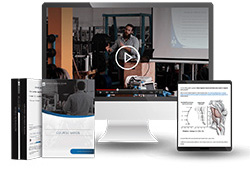‘Stretching is B.S.’ Addendum
I received a lot of questions regarding my article about stretching and many of them fall in the category of ‘when I stretch, I feel better. How can you explain that?’ While such questions could be discarded as empirical evidence for being completely anecdotal, I’m a pragmatist myself and if stretching helped me I wouldn’t stop doing it either. However, if I could more accurately diagnose whatever problem I had and solve it in an easier (and less tedious) manner, that would of course be optimal. So, I thought I’d provide a general answer to these questions. To avoid making the answer overly general and unapplicable, I will roughly stick to the following question.
Hi Menno,
I came to your website from the article you wrote about why stretching is not very useful. I read another article of yours (the one about only needing 0.82g of protein per lb bodyweight) and I can tell that you spend a lot of time and and do a lot of diligent research for your writing. It’s refreshing to see strong, honest literature in the fitness world!
I had a question about the stretching article though. If what you say is true, why does stretching make me feel better? In general, weeks where I stretch regularly (once a day) my body hurts less than weeks where I don’t. I usually spend all day sitting in front of my computer, except for when I walk to a meeting or am working out (3x/week). In particular, lower body mobility drills really helped me out, especially when combined with some soft-tissue work with a tennis ball.So what is it that is making my body feel better, and hurt less?
– Mr. Orange (fictional name)
First, we need to diagnose the exact problem. Absent stretching, Mr. Orange suffers from a ‘hurting body’. That’s about as unspecific as it gets, which clearly illustrates many cases where stretching supposedly helps. If the assumption is that it helps, it’s easy to conclude that it does. I haven’t heard of anyone that said ‘on days subsequent to stretching sessions, my ROM in the squat is consistently greater, as evidenced by camera recordings of my squats, compared to days not subsequent to stretching sessions, keeping all other factors constant’. That would be a more convincing argument in favor of stretching. Anyway, let’s assume that stretching indeed provides some benefit for Mr. Orange, whether it’s increased ROM or less pain. How could stretching do this?
1. It’s not the stretching: it’s just being active
If you compare stretching to complete non-activity, this is a huge confounding effect. We’ve evolved to move constantly. Computers, books and even comfy chairs were not present during most of human evolution and many modern pathologies are caused by inactivity. Complete immobility is absolutely killer for the human body. If you immobilize a human body long enough, many tissues will atrophy or die off completely and I’m not just talking about muscles. In time, you will likely die. If you sit behind a computer all day, as in the case of Mr. Orange, of course it helps to perform light, daily training sessions. If you do 20 minutes of stretching every day, that’s over 2 hours of extra activity per week. Think about how 2 hours of other active recovery work could help you.
2. Increased pain tolerance
Stretching, especially static stretching, increases pain tolerance. If you’re in chronic pain, stretching may provide temporary relief, but just as for pain killer medication, it doesn’t solve the problem. This would also explain why the problem often recurs after cessation of regular stretching. The increased pain tolerance could also be due to endorphins released after the session or simply by relax
Note that the likelihood of this explanation is low for people without chronic pain.
3. The mind-muscle connection
One of the main messages of my stretching article was that the long term effects of stretching are neural, not morphological. Neural (motor) reprogramming can occur without actual activity. You can become better at a sport simply by watching others do it. Your left leg becomes stronger even if you only train your right leg. You can even train a muscle to become stronger by visualizing its training. So too can you improve your technique or your posture by simply thinking about it and I’d say actively engaging in a daily activity (i.e. stretching) definitely constitutes paying attention to it.
The more actively engaged you are with your stretching (that is, you’re not just going through the motions), the more likely this explanation. This is why I say the key to good posture is mind over matter. You don’t have to stretch. You have to educate your nervous system. Good posture in turn can make you feel and function better.
4. The problem resolved over time
This could be something obvious, like soft tissue work in the case of Mr. Orange, or something much less obvious. Maybe your body took care of the problem itself over time. Maybe some external event increased your happiness which made you feel better or healthier. It’s easy to overlook what we cannot think of, in fact it’s impossible not to.
In conclusion, to understand if and how an intervention solves a problem it is necessary to very specifically define the problem and understand what the effects of the intervention are. Only then can we conclude anything meaningful from such a situation. Anecdotes in general are poor empirical evidence, because there are always confounding variables and they are rarely all obvious.
 Want more content like this?
Want more content like this?
Then get our free mini-course on muscle building, fat loss and strength.
By filling in your details you consent with our privacy policy and the way we handle your personal data.
